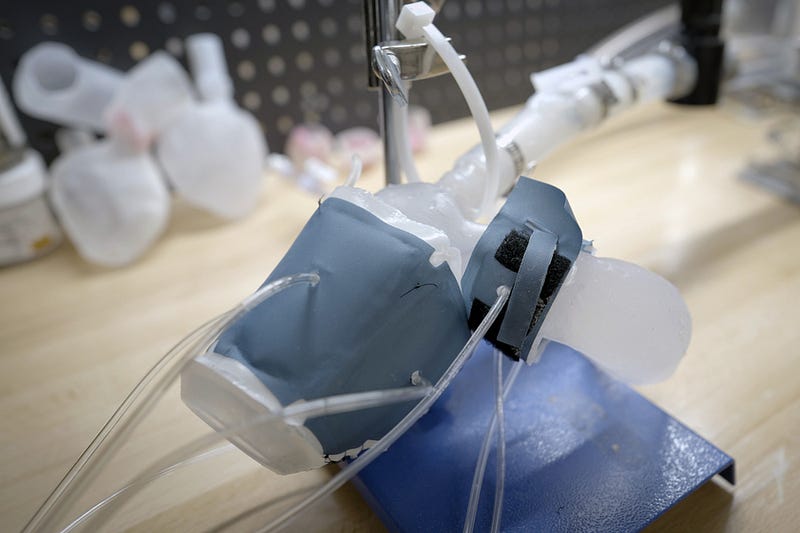# 3D Printing Revolutionizes Heart Treatment: The Future of Medicine
Written on
Chapter 1: Transformative Potential of 3D Printing in Healthcare
3D printing, also referred to as additive manufacturing, has significantly impacted various sectors, particularly healthcare. This innovative technology allows for the creation of complex and patient-tailored objects, applicable in numerous medical fields. One of its most notable advantages is the fabrication of customized medical devices and implants. For instance, 3D printing enables the production of prosthetic limbs, orthopedic implants, and dental devices uniquely suited to each patient's anatomy.
With variations in heart size and shape, particularly in individuals with heart conditions, a team of engineers at MIT has pioneered the creation of a custom 3D-printed robotic heart. This soft, flexible replica can be controlled to replicate the patient’s blood-pumping function, assisting doctors in personalizing treatment based on individual heart characteristics.

Section 1.1: Innovations in 3D Printing Techniques
Researchers have unveiled a rapid 3D-printing method for human tissues and organs that operates at speeds 10 to 50 times faster than traditional techniques. This breakthrough accelerates the customization process, enabling timely and effective patient care.
To construct these custom robotic hearts, medical imaging data is first transformed into a 3D model. Subsequently, the model is printed using a polymer-based ink, resulting in a soft shell that precisely mirrors the patient's heart anatomy. This process can also be applied to create replicas of the aorta, the primary artery responsible for blood transport from the heart.
Section 1.2: Practical Applications in Medicine
“There is a lot of interest in the medical field in using 3D printing technology to accurately recreate patient anatomy for use in preprocedural planning and training.”
~ Sophie Wang, Co-Author of the Study
To simulate the heart's pumping mechanism, researchers have developed specialized sleeves that encase the printed heart and aorta, functioning similarly to blood pressure cuffs. Each sleeve is designed with a precisely patterned inner lining that inflates rhythmically when connected to a pneumatic system, effectively mimicking the heart's action.
The team has also created a separate sleeve to constrict the printed aorta, replicating aortic stenosis—a condition where the aortic valve narrows, causing the heart to exert more effort to circulate blood. The goal is to allow doctors to first print a patient’s heart and aorta, then test various valves in the model to find the optimal fit and function.
Chapter 2: Advancements in Heart Disease Research
These heart models hold promise for research laboratories and medical device firms aiming to evaluate therapies for various heart diseases. In a groundbreaking study, researchers produced custom replicas of real patients’ hearts using a special polymer ink that mimics the natural elasticity and contraction of a real heart.
To create these models, medical scans from 15 patients with aortic stenosis were transformed into 3D computer models. The result was a precise anatomical replica of the left ventricle and aorta, allowing for realistic testing and observation.

Section 2.1: Testing and Validation of Heart Replicas
To assess the effectiveness of these 3D-printed heart models, the researchers replicated interventions performed on actual patients. They implanted similar valves into the printed aortas, based on the experiences of patients who underwent valve replacement to enlarge their aorta. By activating the printed heart, they noted that the artificial valves produced blood flow patterns akin to those observed in real patients post-surgery.
Furthermore, the researchers employed a functioning printed heart to test various implant sizes, aiming to identify the best fit and flow dynamics. This methodology could enhance clinicians' ability to determine the most effective treatments for patients with complex heart anatomies.
In summary, personalized heart replicas represent a significant advancement in creating effective treatments for patients with unique cardiac structures. This pioneering research was published in the Journal of Nature Biomedical Engineering, marking a notable step forward in medical innovation.
Stay connected with more insightful content—join my mailing list for updates.